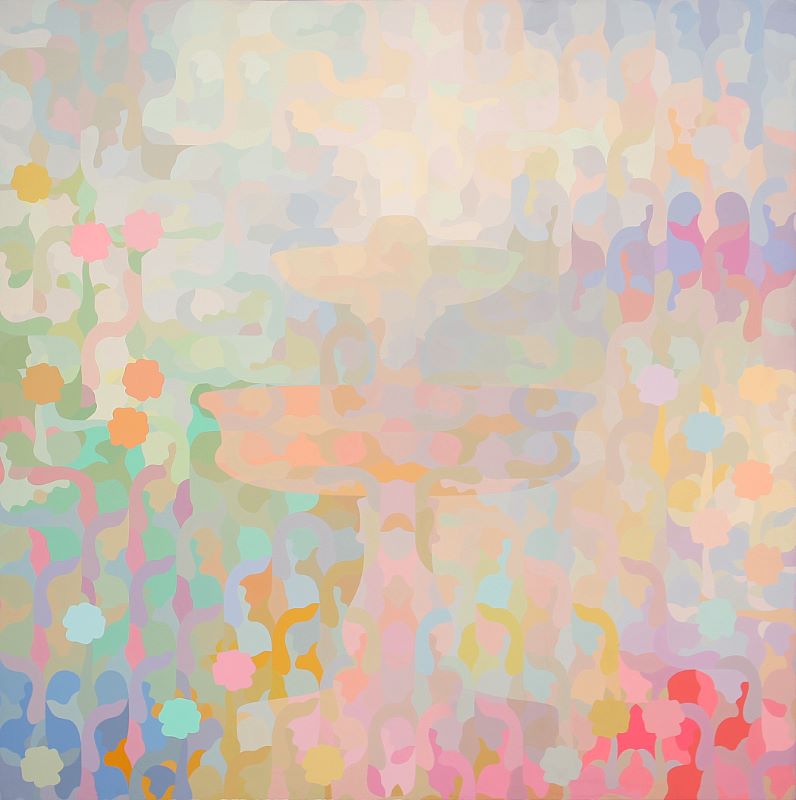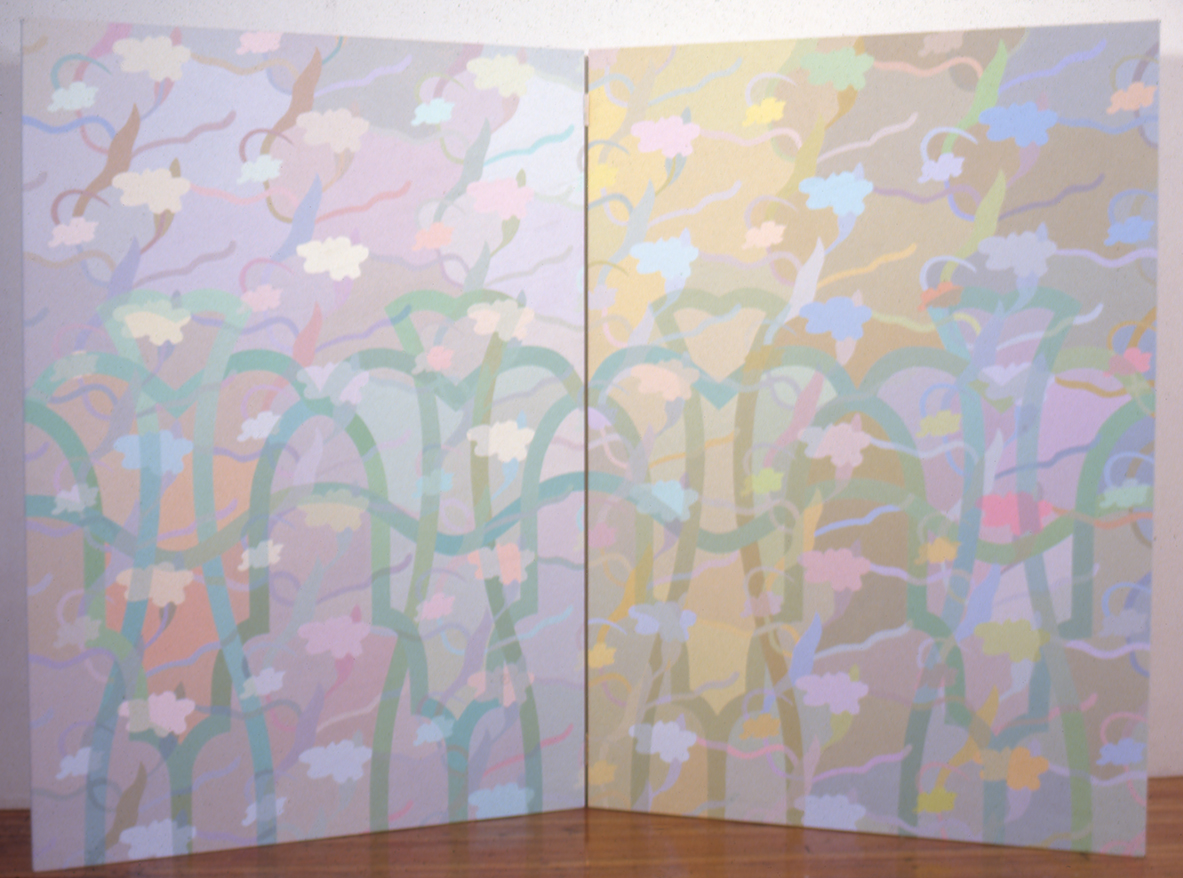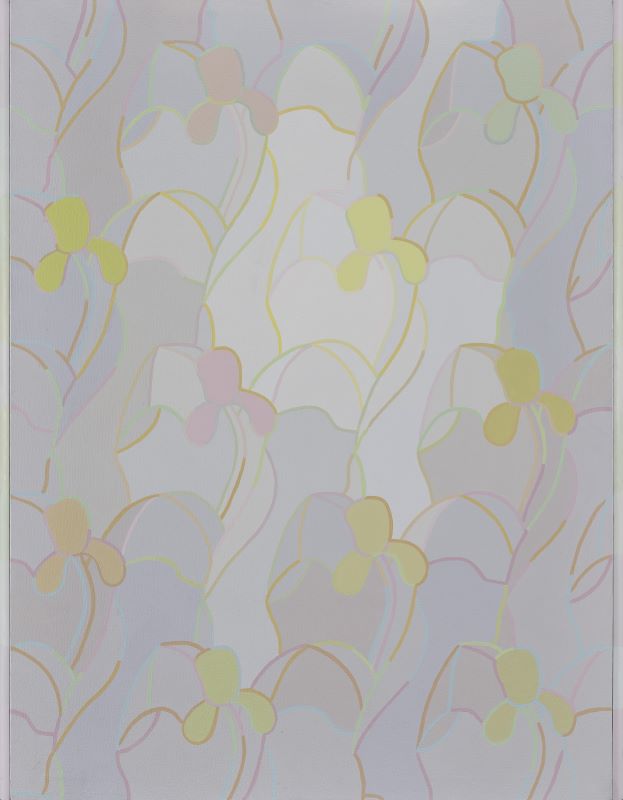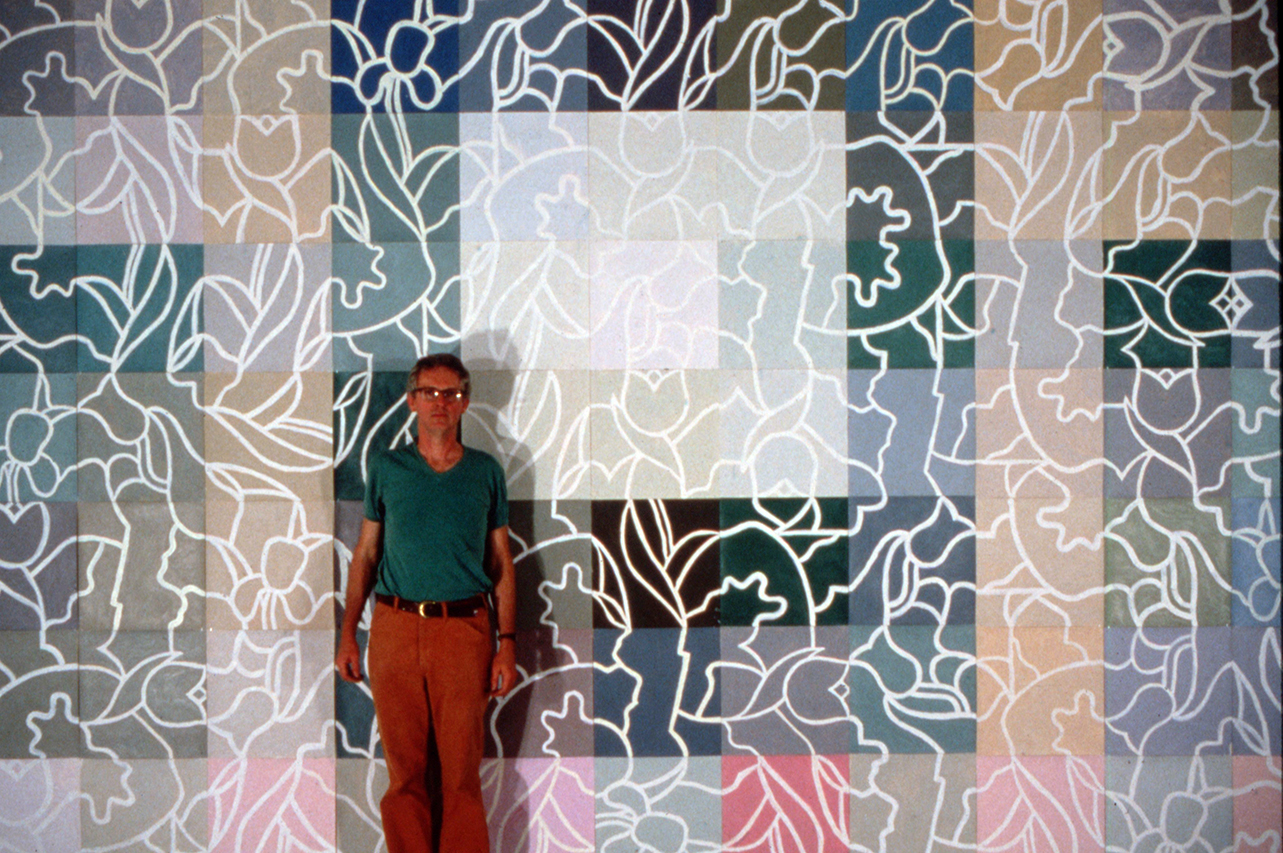Irene Clurman on George Woodman, "Arts Magazine," April 1982

In her essay for Arts Magazine related to George Woodman’s 1982 solo exhibition at Haber-Theodore Gallery in New York, Irene Clurman discusses the transformation of Woodman’s patterns and palette into more representational forms.“Idiosyncrasies in the patterns thwart attempts to comprehend fully the logic behind interlacing of tulips, irises, and lattice designs. Some configurations appear only once, as accents; others recur as mirror images; still others are caught in the act of changing colors as forms overlap. Only the artist knows for sure what will happen next.
“And what has happened in Woodman’s recent work goes beyond unexpected shifts in formal progressions. Regarded for years as a rigorous non-figurative painter, Woodman has stepped out of the mold without totally destroying it.”
Click here to read the rest of Clurman’s essay.
Irene Clurman. “George Woodman.” Arts Magazine, April 1982.









